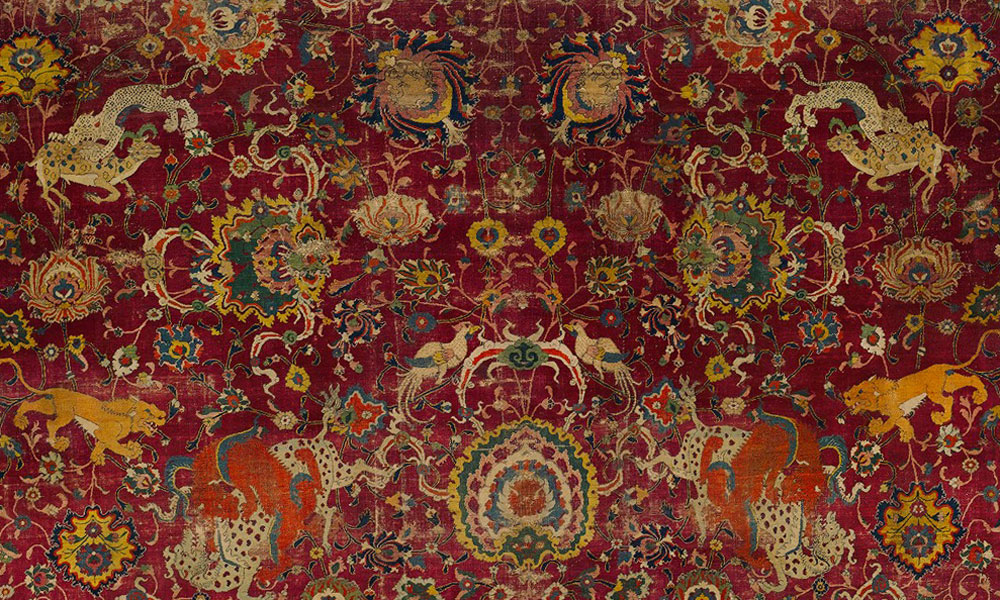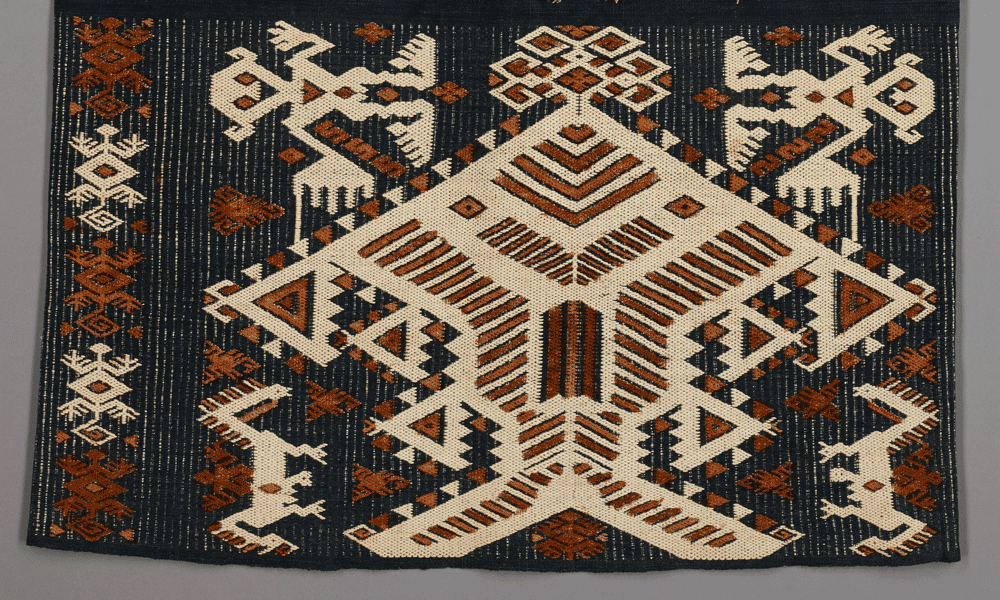Three great online resources for antique carpets and textiles
With most major museums across the world temporarily closed, our study and appreciation of antique carpets and textiles are forced to move online. Luckily, many institutions now have collection databases with high-resolution images and thorough catalogue entries. Here are three great resources for discovering new and old carpet and textile favourites.
The Met

The Emperor’s Carpet (detail), Persia, second half 16th century. The Met, Rogers Fund, 1943, 43.121.1
The Met’s collection encompasses almost everything you could want in terms of antique carpets and textiles. Search the database for keywords, zoom in on minute details in high-resolution photographs, many of which are Open Access, or use the larger themes such as ‘Islamic Art at the Met’ to draw connections between different media.
In addition, through MetPublications, you can search, read and download Met publications from the last five decades. Suggested reading includes Flowers Underfoot: Indian Carpets of the Mughal Era, The Colonial Andes: Tapestries and Silverwork, 1530-1830, and When Silk Was Gold: Central Asian and Chinese Textiles.
Catalogue of the Textiles in the Dumbarton Oaks Byzantine Collection

Hanging with Hestia Polyolbus (detail), Egypt, ca. 6th century. Dumbarton Oaks Research Library and Collection, BZ.1929.1
Dumbarton Oaks in Washington, DC, is home to about 260 Byzantine and early Islamic textiles. Until recently, these holdings had never been systematically published. A 2019 digital catalogue edited by Gudrun Bühl and Elizabeth Dospel Williams has changed that, embracing the possibilities of the online format. Catalogue entries link to other objects in the collection and elsewhere, and the high-resolution images allow for close study.
The catalogue section is accompanied by a number of scholarly essays by renowned experts in the field. The topics reflect the project’s focus on furnishing textiles, inspired by the many hangings in the collection: ‘Curtains in the Middle and Late Byzantine House’, ‘Loops, Tabs, and Reinforced Edges: Evidence for Textiles as Architectural Elements’, and ‘A Taste for Textiles: Designing Umayyad and Abbasid Interiors’ are some examples.
Dallas Museum of Art

Woman’s skirt (detail), lau pahudu, east Sumba, Indonesia, 19th century. Dallas Museum of Art, Steven G. Alpert Collection of Indonesian Textiles, anonymous gift, 1983.94
The Dallas Museum of Art has an excellent database of 25,000 works of art from the collection and is another Open Access institution. The pieces of Islamic art currently on loan from the Keir Collection include classical carpets and textiles of outstanding quality, which can be admired online.
Furthermore, the Dallas Museum of Art is home to the Steven G. Alpert Collection of Indonesian Textiles, and a wide-ranging African art collection in which textiles feature. Most objects have up-to-date and comprehensive catalogue entries.
Longer articles offer insight into how the collection was formed, detailing purchases, gifts, and collecting policy.
Speaking of online resources, it would be amiss not to mention the HALI Archive, a fully searchable online archive of every issue of HALI ever published, available to all subscribers. Please click here for instructions on how to access the HALI Archive or email [email protected].
























Comments [0] Sign in to comment